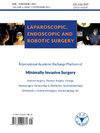Revised in-depth meta-analysis on the efficacy of robot-assisted versus traditional free-hand pedicle screw insertion
Q3 Medicine
引用次数: 0
Abstract
Objective
Robot-assisted pedicle screw insertion has recently emerged as an alternative to the traditional free-hand technique. However, discrepancies in the accuracy of screw placement between the 2 methods have been highlighted by some comparative studies. This meta-analysis was conducted to synthesize evidence comparing these techniques.
Methods
Searches were conducted in 5 electronic databases adhering to specific eligibility criteria for randomized and observational studies. The data were analyzed using RevMan software and the results are presented as odds ratios (ORs), mean differences, or standard mean differences (SMDs) with 95% confidence intervals (CIs). Our analysis included 12 studies (7 randomized trials and 5 observational studies, involving 883 patients and 4903 screws).
Results
The results demonstrated a higher rate of Grade A Gertzbein and Robbins pedicle placement score (OR: 1.77; 95% CI: 1.10–2.87), a lower rate of revision surgeries (OR: 0.21; 95% CI: 0.09–0.52), and a shorter radiation exposure duration (SMD = −1.38, 95% CI: −2.32 to −0.44) in the robot-assisted group compared with the free-hand group. Nonetheless, the length of hospital stay, volume of intraoperative blood loss, postoperative visual analogue scale scores for back pain, and rate of wound infection were similar between the 2 groups. Significant heterogeneity was observed in some outcomes.
Conclusion
Compared with the free-hand method, the robot-assisted technique provides greater accuracy and reduced radiation exposure. The efficacy of the robot-assisted technique is expected to improve further as experience with its use in surgery grows.
机器人辅助椎弓根螺钉植入与传统徒手椎弓根螺钉植入疗效的深度荟萃分析修订版
目的机器人辅助椎弓根螺钉置入术是最近出现的一种替代传统徒手技术的方法。然而,一些比较研究强调了这两种方法在螺钉置入准确性上的差异。本荟萃分析旨在综合比较这两种技术的证据。方法按照随机和观察性研究的特定资格标准在 5 个电子数据库中进行搜索。数据使用 RevMan 软件进行分析,结果以几率比(OR)、平均差异或标准平均差异(SMD)及 95% 置信区间(CI)表示。我们的分析包括 12 项研究(7 项随机试验和 5 项观察性研究,涉及 883 名患者和 4903 颗螺钉)。结果结果显示,Gertzbein 和 Robbins A 级椎弓根置入评分率较高(OR:1.77;95% CI:1.10-2.87),翻修手术率较低(OR:0.21;95% CI:0.09-0.52),机器人辅助组与徒手组相比辐射暴露时间较短(SMD =-1.38,95% CI:-2.32 至-0.44)。不过,两组的住院时间、术中失血量、术后背痛视觉模拟量表评分和伤口感染率相似。结论与徒手方法相比,机器人辅助技术具有更高的准确性,并减少了辐射暴露。随着机器人辅助技术在手术中应用经验的增加,其疗效有望进一步提高。
本文章由计算机程序翻译,如有差异,请以英文原文为准。
求助全文
约1分钟内获得全文
求助全文
来源期刊

Laparoscopic Endoscopic and Robotic Surgery
minimally invasive surgery-
CiteScore
1.40
自引率
0.00%
发文量
32
期刊介绍:
Laparoscopic, Endoscopic and Robotic Surgery aims to provide an academic exchange platform for minimally invasive surgery at an international level. We seek out and publish the excellent original articles, reviews and editorials as well as exciting new techniques to promote the academic development.
Topics of interests include, but are not limited to:
▪ Minimally invasive clinical research mainly in General Surgery, Thoracic Surgery, Urology, Neurosurgery, Gynecology & Obstetrics, Gastroenterology, Orthopedics, Colorectal Surgery, Otolaryngology, etc.;
▪ Basic research in minimally invasive surgery;
▪ Research of techniques and equipments in minimally invasive surgery, and application of laparoscopy, endoscopy, robot and medical imaging;
▪ Development of medical education in minimally invasive surgery.
 求助内容:
求助内容: 应助结果提醒方式:
应助结果提醒方式:


